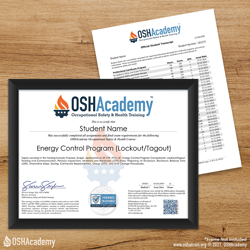Introduction
This course is based on the requirements in OSHA regulation 1910.147, The Control of Hazardous Energy (Lockout/Tagout), which protects employees who could be injured as a result of the unexpected release of hazardous energy. The requirements apply when an employee doing service or maintenance on a machine or equipment could be injured by the unexpected startup or release of hazardous energy.
Lockout (LO) and tagout (TO) are the primary methods of controlling hazardous energy. Service or maintenance includes erecting, installing, constructing, repairing, adjusting, inspecting, unjamming, setting up, trouble-shooting, testing, cleaning, and dismantling machines, equipment, or processes. In this course, equipment means equipment and machines, whether fixed or mobile.
Course Objectives
| ID | Objective |
|---|---|
| TO 1.0 | Achieve a minimum score of 70% on the final course assessment. |
| LO 1.1.1 | Describe the requirements and elements of the Energy Control Program (ECP). |
| LO 1.2.1 | Describe the scope, purpose, and authorizations in a written lockout/tagout procedure. |
| LO 1.3.1 | Describe ECP training requirements for authorized, affected, and other employees. |
| LO 1.4.1 | Describe the requirements for periodic inspection and evaluation of the ECP. |
| LO 1.5.1 | Identify and give examples of the use of lockout/tagout materials and hardware. |
| LO 1.6.1 | List and describe the basic steps in the application of energy control devices. |
| LO 1.7.1 | Describe the procedure for release from lockout/tagout. |
| LO 1.8.1 | Describe the group lockout/tagout process, and requirements during shift change. |
Key: Terminal Objective (TO), Learning Objective (LO)



